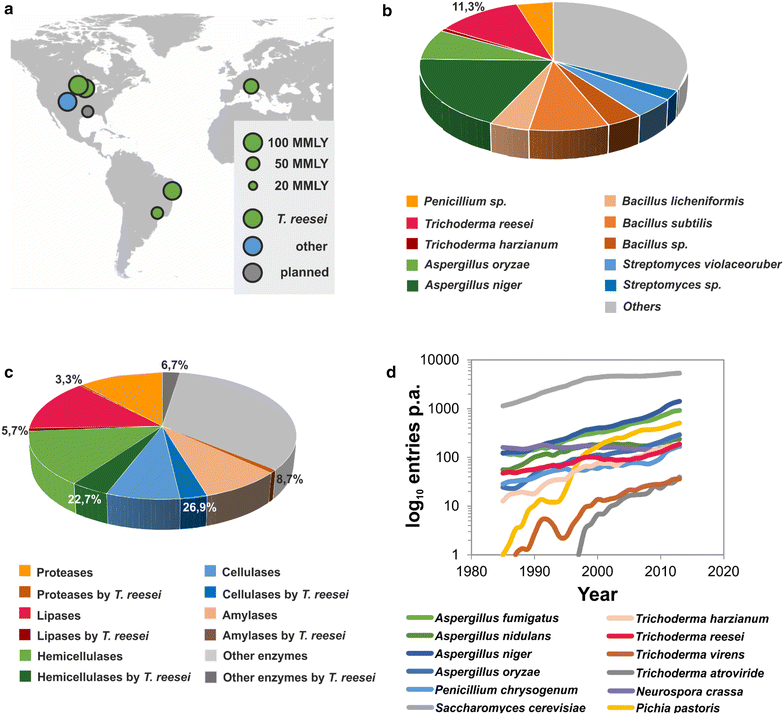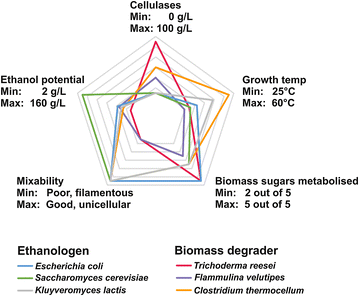Cellulases and beyond: the first 70 years of the enzyme producer Trichoderma reesei
- PMID: 27287427
- PMCID: PMC4902900
- DOI: 10.1186/s12934-016-0507-6
Cellulases and beyond: the first 70 years of the enzyme producer Trichoderma reesei
Abstract
More than 70 years ago, the filamentous ascomycete Trichoderma reesei was isolated on the Solomon Islands due to its ability to degrade and thrive on cellulose containing fabrics. This trait that relies on its secreted cellulases is nowadays exploited by several industries. Most prominently in biorefineries which use T. reesei enzymes to saccharify lignocellulose from renewable plant biomass in order to produce biobased fuels and chemicals. In this review we summarize important milestones of the development of T. reesei as the leading production host for biorefinery enzymes, and discuss emerging trends in strain engineering. Trichoderma reesei has very recently also been proposed as a consolidated bioprocessing organism capable of direct conversion of biopolymeric substrates to desired products. We therefore cover this topic by reviewing novel approaches in metabolic engineering of T. reesei.
Keywords: Biorefinery; Cellulase; Consolidated bioprocessing; Gene expression; Lignocellulose; Recombinant protein production; Trichoderma reesei.
Figures


References
Publication types
MeSH terms
Substances
LinkOut - more resources
Full Text Sources
Other Literature Sources

